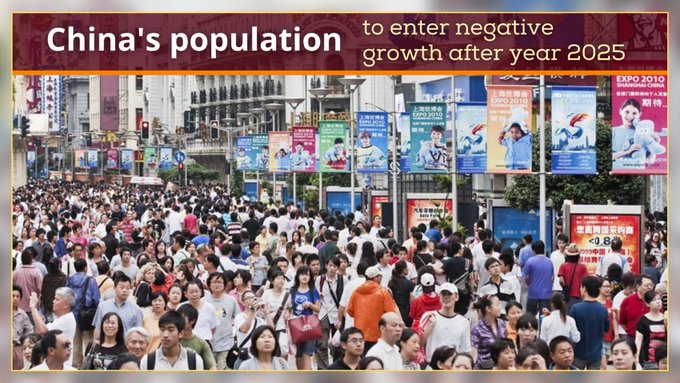AMN / WEB DESK

Authorities in China have issued new guidelines to promote population growth amid falling birth rate. In a rare occurrence, a total of 17 Chinese government departments on Tuesday jointly released a guideline on support policies in finance, tax, housing, employment, education and other fields to create a fertility-friendly society and encourage families to have more children, as the country’s latest “Three child policy” found less traction among the population in child-bearing age.
China’s National Health Authority said on Tuesday, China will discourage abortions and take steps to make fertility treatment more accessible as part of efforts to boost one of the world’s lowest birth rates. The authority said it would carry out reproductive health promotion to enhance public awareness while “preventing unintended pregnancy and reducing abortions that are not medically necessary.” China’s fertility rate of 1.16 in 2021 was far below the 2.1 OECD standard for a stable population and among the lowest in the world.
The announcement underscored the seriousness of China’s demographic decline, as a contraction in Chinese population is expected before 2025. Experts said that China’s total population may begin to shrink earlier than previously expected, and with the decreasing willingness for marriage and fertility especially among young people, the situation may worsen. High pressure job environment, high cost of child-bearing in addition to uncertainties associated with China’s stringent “zero-COVID” policy are affecting every aspect of Chinese people’s lives and may have exacerbated China’s demographic scenario, experts say.
State media reported that detailed support policies listed in the guideline included promoting prenatal and postnatal care, further developing nursing systems, improving the mechanism for maternity leave and insurance, offering preferential house-purchase policies to families with more than one child, adding high-quality education resources.
